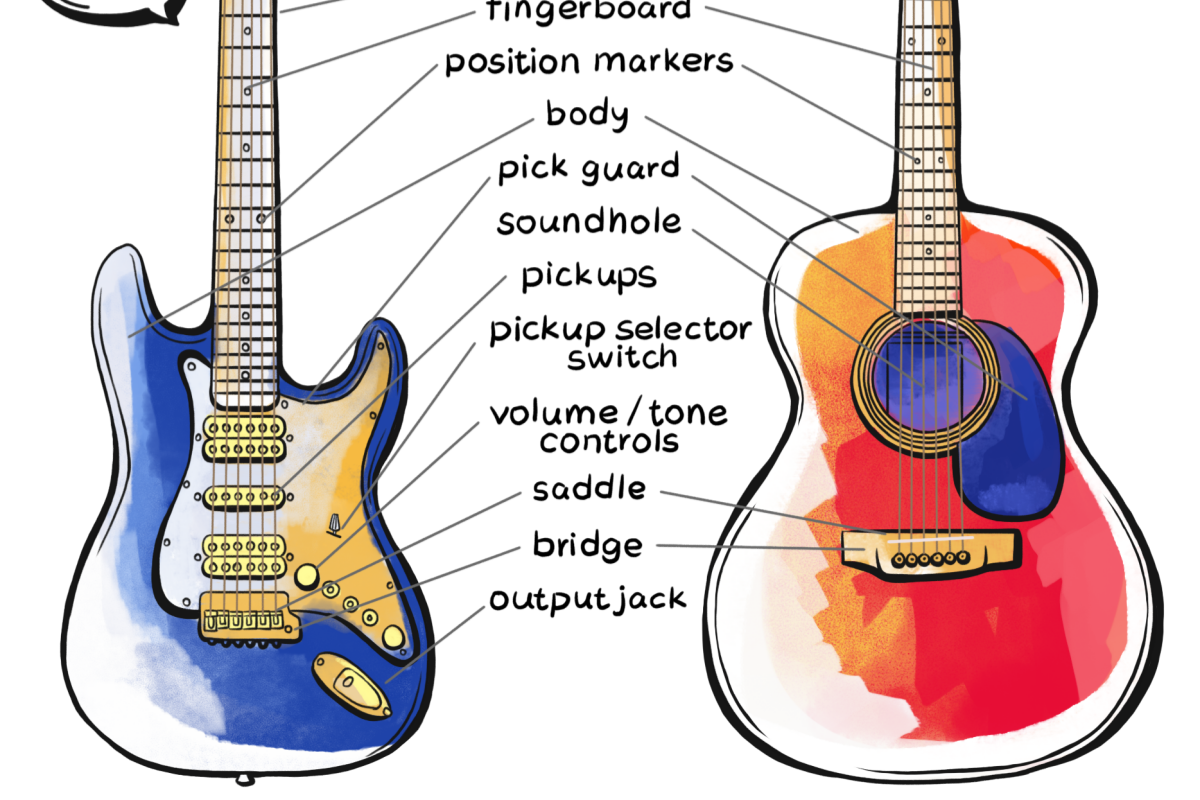The world of guitar tech is constantly evolving. From sophisticated optical pickups and quirky-looking guitars with 10+ strings to simpler innovations like capos, we’re seeing accessories reshape the meaning of “utility” in this space.
One of the latest inventions is far simpler, and in fact, you can even make it at home with some basic DIY skills. We’re talking about rubber bridges - a neat little accessory that vividly emulates the palm muting technique.
More and more artists are warming up to rubber bridges. From smaller indie acts like Madison Cunningham to the world-renowned Taylor Swift and Olivia Rodrigo, rubber bridge guitars are getting bigger and bigger. Let’s dive deep into what they are, why you should be using one, and how to make a rubber bridge guitar at your own home.
What Is a Rubber Bridge Guitar?
A rubber bridge is a guitar bridge made entirely of rubber, as opposed to more “conventional” models that typically come in bone and synthetic variants. It directly impacts the guitar’s tone, serving as a sponge that passively dampens the sound.
Rubber bridge acoustic guitars typically have a softer tone that is easier to control, almost as if you had the palm of your hand tenderly placed against the strings at all times. Although it’s far less common, both semi-acoustic and electric guitars could use a rubber bridge.
Who Is Using Rubber Bridge Guitars?
Rubber bridges have been around for quite a few years, but they went viral between 2019 and 2020.
Namely, more and more people became interested in how these things work after hearing a noticeable difference in the sound of contemporary pop albums like “Folklore” by Taylor Swift, or classic blues records like “Rough and Rowdy” by Bob Dylan.

Photograph: Beth Garrabrant/Stoke PR
Rubber bridge guitars also made their way into the rock scene. The Chicago-based rock group Wilco used rubberized saddles when recording their 11th album, “Ode to Joy”.
We’ll undoubtedly see more bands, singer-songwriters, and guitarists use rubber bridges as they discover the benefits these simple inventions have to offer. Speaking of which, let’s address the perks and potential downsides of rubber bridges.
Why Use a Rubber Bridge Guitar?
The inspiration to place a film of rubber between the guitar’s saddle and the strings lies in simplicity. Reuben Cox, a famous LA luthier who is believed to have popularized the use of rubber bridges said in a recent (2021) interview that he wanted to make new guitars sound more “vintage-esque”.
However, that’s just the tip of the iceberg. Considering that most entry-level guitars come equipped with plastic or synthetic bridges, adding a layer of rubber on top not only shields the bridge but also reduces wear.
Another prominent benefit of using a rubber bridge acoustic is that it makes the tone of “unruly” instruments far more manageable. Whether you’re using rusty old strings or if the guitar’s internal architecture promotes jangly noises, the rubberized bridge will act as a sponge and dampen your tone.
Possibly the biggest advantage of rubber saddles and bridges in acoustic guitars is that they’ll deliver consistent palm-muted performance. Some beginners don’t know how to perform this technique too well, others may get tired or distracted after prolonged use - no longer. A rubber bridge guitar will always sound as if it was gently palm-muted.
How to Make a Rubber Bridge Guitar
There’s no need to hunt for premade rubber bridges or waste hundreds of dollars on guitars equipped with one since it’s remarkably easy to make a rubber bridge guitar at home. Here’s how:
- Get a large block of rubber from any hardware store or online marketplace: The piece doesn’t need to be too large, but buying a big chunk can be good for replacements and backups.
- Accurately measure the saddle height of your guitar: First, unstring your guitar and remove the saddle. You’ll later carve the block to match the dimensions of your current bridge, so try to be as precise as possible.
- Place the block in the saddle position and run the strings along it: Whittle the rubber block into a more manageable shape if needed. The purpose of this step is to accurately determine where your strings will fall when you replace the current saddle with a rubber one. Place your current bridge against the rubber block and mark string spacings.
- Use a file to engrave small holes for the strings: You’ll only be digging into the rubber a few millimeters deep, but it’s important not to “drill” too wide. Place your current bridge against the rubber bridge for reference as to how long and deep the engravings should be.
- Place the rubber bridge on your guitar: The last part is the simplest. Simply put the rubber bridge back where the old bridge was, re-string your guitar, and make adjustments wherever needed.
Tips & Tricks for Making a Rubber Bridge
- The main thing you should be focused on is getting the indentations for string spacing right.
- Don’t drill into your guitar if the rubber bridge is wiggling. If you want to preserve the wood, glue the bridge to a tiny film of plastic or simply carve a slightly larger chunk of rubber. It will only move if you get the saddle height measurements wrong.
- Experiment with different types of rubber. Each type will give you a slightly different sound.
- If you’re worried about the aesthetics of your new rubber bridge, cut out the unnecessary parts and use sandpaper to fine-tune it to the desired shape.
- Note that your guitar’s action might be slightly different when using a bridge made of rubber. The quickest way to change this (if your old saddle was your main way of tuning the action) is to simply reposition the rubber bridge along the length of the strings until you get satisfactory results.
Conclusion
At the end of the day, rubber bridges can be considered good because players can more flexibly approach the way they’re making music.
Whether you want to ensure your recordings are tamer or simply want your audience to better hear your licks during live shows, you can rely on a rubber bridge to get you where you want to go.
If you like this article, please share it!
Be sure to join our FB Group Guyker Guitar Parts & Accessories Community to share your ideas! You can also have connections with like-minded guitar players, Guyker updates as well as discounts information from our FB Group.





